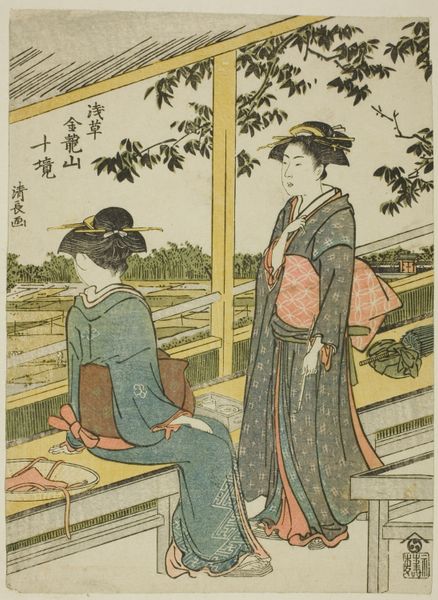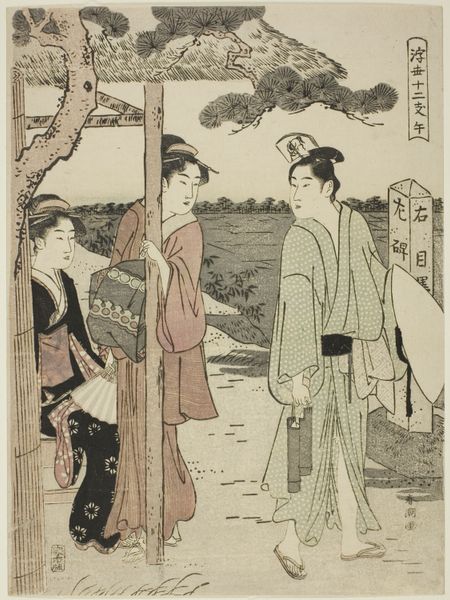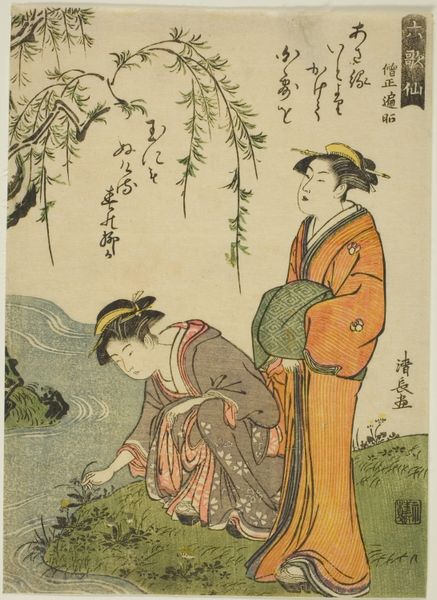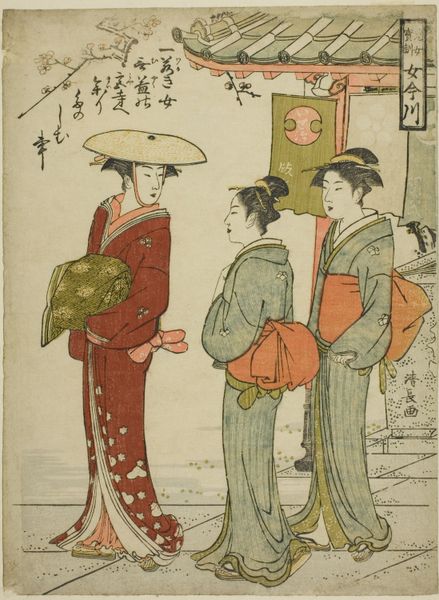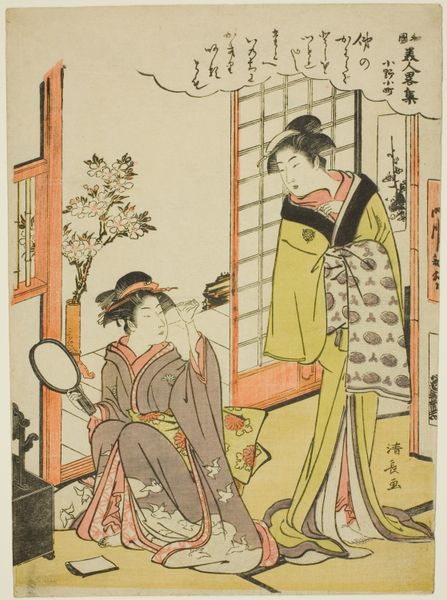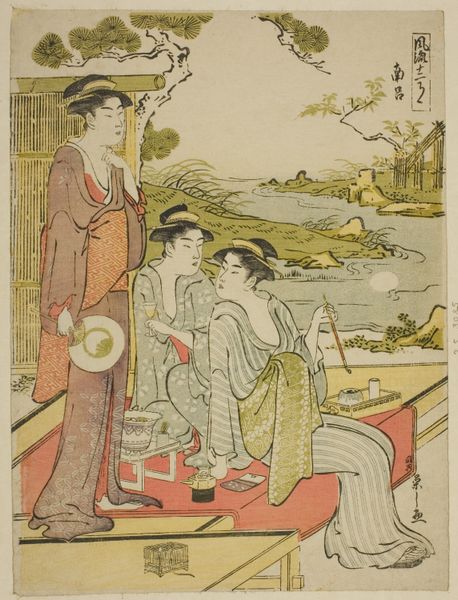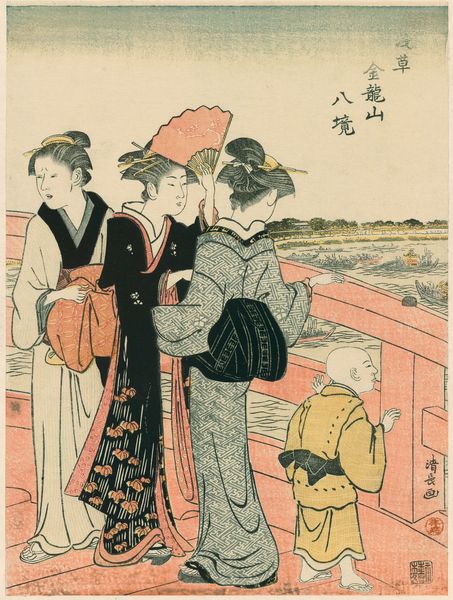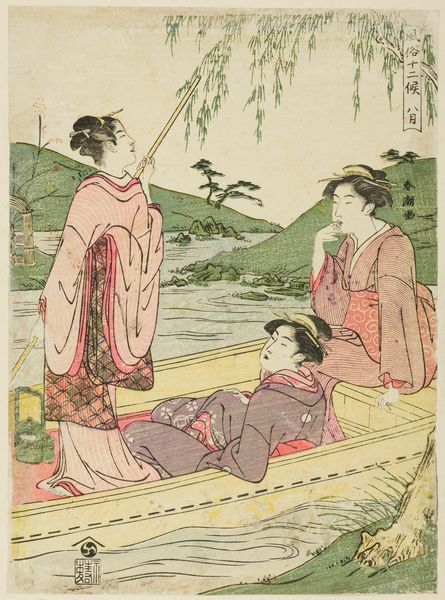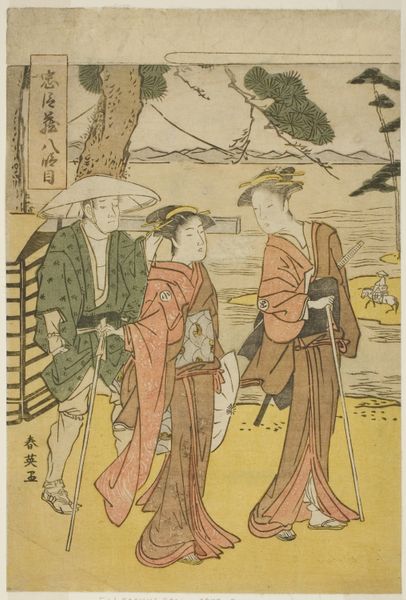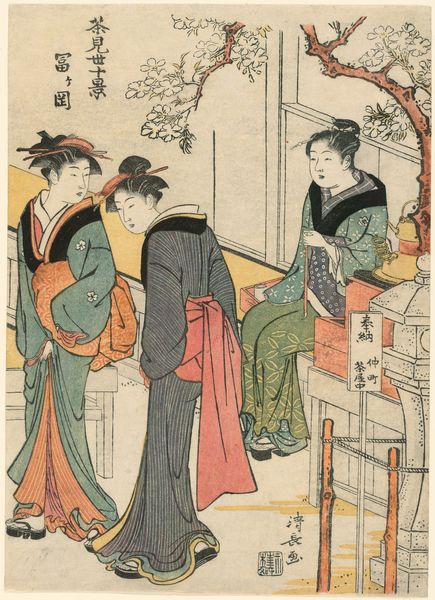
View from Azuma Bridge, from the series "Ten Precincts of Kinryuzan Temple in Asakusa (Asakusa Kinruzan jikkei)" c. 1783
0:00
0:00
# print
#
asian-art
#
sketch book
#
landscape
#
ukiyo-e
#
genre-painting
Dimensions: 21.8 × 16.0 cm
Copyright: Public Domain
Curator: Let's take a moment with this beautiful print, “View from Azuma Bridge,” part of the series "Ten Precincts of Kinryuzan Temple in Asakusa". It's by Torii Kiyonaga, and was created around 1783. The work employs the Ukiyo-e medium. Editor: Wow, it's striking. It's so calm, a moment of pause amidst the flurry of the world. These women, with their intricate robes and thoughtful expressions, observing a river scene. It almost feels like you could step into their world. Curator: The location itself holds significance. Kinryuzan Temple was, and is, a popular destination. Ukiyo-e prints of this era often depict popular social locations—emphasizing the daily life and entertainment culture of Edo-period Japan, specifically how such locales served as stages for social display. Editor: Absolutely, I get that completely. I wonder what they're talking about. There’s so much suggested in their gestures—that woman pointing. I like how that gesture brings you to the rest of the picture plane, out to the distant boats, out beyond the architecture in the distance to make a kind of “statement” of that era. There's a nice geometry going on as well. And all the boats down in the distance are adorable! Curator: The bridge here isn’t just a location; it’s a social space, a stage for these figures. Kiyonaga elevated the depiction of women in ukiyo-e, moving away from the earlier focus on courtesans to portraying ordinary women engaged in daily life. These women aren't idealized or overtly sexualized, they're simply present and elegant. And his design is very self-aware of its role as design; the women almost function like ornamental details in their context. Editor: Exactly. And notice the light—how soft and diffused it is? It feels like a breezy day on that bridge. The subdued color palette adds to that serenity, almost giving a sense of nostalgia. If only we had smell-o-vision. I'll bet you anything that place would smell great. Curator: I completely agree. The prints were consumed by all classes in Edo society. And I also see what you are saying about light—they speak volumes without using overly saturated hues or dramatic shadow play. The composition leads your eye effortlessly through the image. It’s so understated, which is its strength in terms of both artistry and the broader sense of representation. Editor: Right, well said. It gives you just enough detail so your imagination can fill in the rest. So, so nice. Thanks, Torii!
Comments
No comments
Be the first to comment and join the conversation on the ultimate creative platform.
